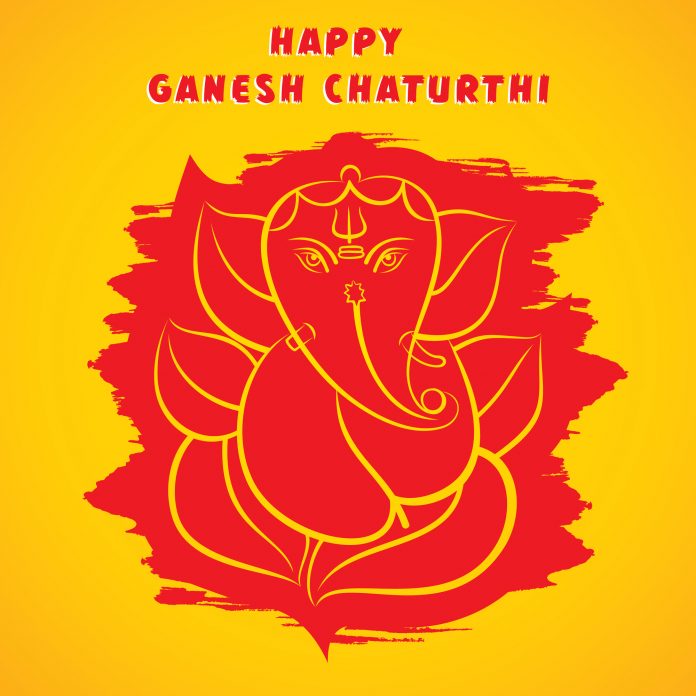Lord Ganesha commands a unique position in the Hindu pantheon and is depicted in the most ingenious and imaginative forms. The colourful, elephant-headed deity of four-armed Ganpati riding a mouse is invoked by every devout Hindu before beginning a new venture or carrying out an auspicious mission.
Antiquity of Ganesha
Historians say that the predominance and reputation of the Lord can be traced to the Gupta Period. The influence of Ganesha spread to Karnataka, Maharashtra, Orissa and Bengal. Despite his uniform influence, Maharashtrians consider Him as Maharashtra’s special Mangala Murti (auspicious deity). The Ashta Vinayak Temple complex can be found in Pune. Siddhi Vinayak Temple at Prabhadevi in Mumbai witnesses thousands of devotees every Tuesday.
Iconographers have conceived the most imaginative forms of Lord Ganesha. In some temples in the south of India, idols of dancing Ganesha are worshipped. An icon of female Ganesha known as Vigneshwari can be seen in the Shiva Temple of Suchindram near Nagarcoil. In South India, Pillaiyar, as He is known, is classified into two forms based on the twist of the trunk. The right-turned trunk is called Valampuri and if the trunk is turned to the left, Edampuri Pillaiyar.

Multi-dimensional attributes of Ganesha
Ganapathy or Ganesha (lord of the tribe), Vigneshwara (remover of obstacles), Ekadanta (one-tusked), Lambodara (pot-bellied), Vakratunda (twisted trunk), Gajanana or Gajamukha (face or head of elephant), Vinayak (features of a Nayak or leader), Mangalmurti, Bhalachandra, Umaphal, are some of the names fondly referred to by His devotees.
Sculpting the idol
It is interesting to note that the earthen murtis which Ganesha devotees in Mumbai worship and immerse, close to five lakh idols, during Ganeshotsav every year come from a single source – Pen, located 125 kms from the megapolis. The quiet and sluggish town of Pen on the Raigad coast bustles with idol-making activity while Mumbai’s resident-industry in Lalbaug makes up for the pause in supply though Lalbaug idols have their faithful patrons too.

The murtikars of Pen form a chunk of the 5,000-strong artists’ community in this essentially Maharashtrian town. Their dedication and religious zeal to their art impart a finer touch to their skill achieved over decades, making the Pen murtis a cut above the rest in the market.
It is a wonder how idol-making could have taken such strong roots in Pen since neither shadu (a type of clay) was obtainable locally nor was the demand for idols strong then. The legend reveals that four resourceful young men caught an economic message in Bal Gangadhar Tilak’s call for sarvajanik or community celebration. They struggled to find the right kind of clay, ultimately traced it in Saurashtra and had it sent to Pen.
Since the people of Pen were artistic – there were a good number of potters, coppersmiths and blacksmiths – it was easy to find talented enthusiasts to mould the clay. Artists actually used organic materials like turmeric, kumkum, and kajal as decorative hues for the first few years till synthetic paints were introduced. The initial few murtis were wrapped in banana leaves and transported 3kms away to Antore jetty. From here, helpful and cooperative fishermen took them to Ferry Wharf in Bombay.

The mode of idol-making is quite fascinating. They are created around structures of wood or steel, with a stuffing of coir and hay to lend them a human shape. Upon this, a layer of shadu or clay is smeared to bind the structure together. The head, hands, and feet are cast in dyes and put in place. The final layer is Plaster-of-Paris with the master craftsman levelling out the jagged edges and engraving features and other details. Each phase takes two to three days. The finishing touches of imitation jewellery, clothing, garland and other adornments are added to give a regal and festive look.
The bustle to make idols in Pen gets in motion in December when the first lot of order is received by art houses. The work is carried on through the summer months when the statues are baked in the intense heat and then embellished. The distribution begins a month before Ganesh Chaturthi, excluding that consignment which goes to the regular clientele in London. Today, in this township, it is pagdi-making (turban) for six months and idol-sculpting in the other six that feeds its populace!
Image courtesy: Gita Hari and Depositphotos



















